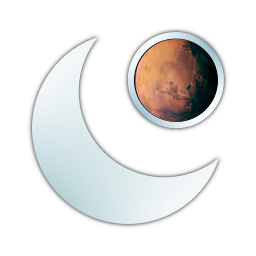- cross-posted to:
- globalnews@lemmy.zip
- cross-posted to:
- globalnews@lemmy.zip
I’ve read like eight of these articles about this Moon just trying to find out if we can see it without a telescope.
I’m assuming we can’t see it, but none of the articles I’ve read mention it. it seems crazy that none of them mention its visibility.
Will we be able to see the second moon?
The posted article says no, not even with an amateur telescope
of course i skim this one and it’s in the final paragraph.
thank you!
The closest approach is about 600,000 Km away. That’s more than twice the distance to the moon. At that distance, to be (just barely) visible to the naked eye, it would have to be about 170km across, which would put it among the largest asteroids in the solar system. In fact, 2024 PT5 is only about 11m across (~36ft). You would need quite a powerful telescope, indeed, to see an object that small at that distance.
With a good telescope: https://www.space.com/earth-mini-moon-asteroid-2024-pt5
rad, thank you
That’s no moon…
For two months it is.
I’ve got a bad feeling about this.
Just fly casual.
Was wondering about its size: 11 meters (36 ft) in diameter per wikipedia
That is just over 98 Big Macs.
If we send rocket(s) up and can fiddle with its velocity enough, we could keep it.
I feel like if you capture a new moon, you should also get to name it.
If McDonalds will sponsor it, we could have Luna and 98 Big Macs.
spinning around Earth in a horseshoe shape for about two months
what? what kind of orbit is that?
The kind that takes more than 2 months to ‘complete’. From the perspective of the earth it makes a horseshoe shape. From the ‘temporary moon’ perspective it gets a trajectory adjustment on its solar orbit.
It’s more like a gravity assist that takes 2 months to complete than an orbit.
It’s a parabola or hyperbola. Of course, it’s not technically an “orbit” since it isn’t closed; the Wikipedia pages are called Parabolic trajectory and Hyperbolic trajectory.
An asteroid called 2020 CD3 was bound to Earth for several years before leaving the planet’s orbit in 2020
How can something that’s in an orbit for years then just leave again?
Is the orbit so big it crosses other planets’ sphere of influence?
Or is its apoapsis far enough away for the sun to snatch it away?Gravitational interactions between Earth, Moon, Sun leading to the orbit never really being stable, probably. The asteroid decided Earth orbit wasn’t its’ forever home.
Its also very hard to get an object into the perfect orbit that it wont float away. Our moon is slowly drifting farther and farther from us
Immediately thought of QI
can we capture it?
It’s just gonna fall off the Empire State Building trying to save Nicole Kidman
So if I’m doing the math right… that’s 3 total moons:
Moon
Mini moon 1
The second mini moon
Science is fun.
A second mini moon? Do we even have a first mini moon?






